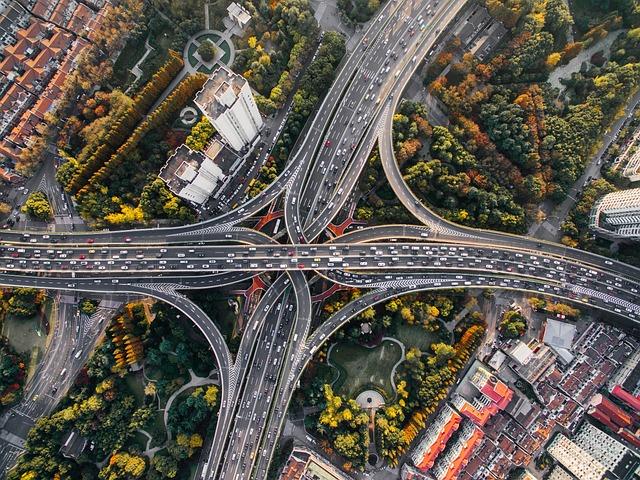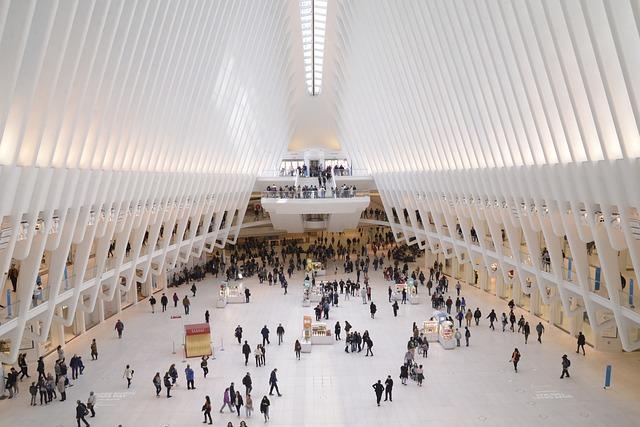Building a Stronger Pakistan: The Future of Infrastructure
In the tapestry of a nation’s progress, infrastructure serves as the resilient thread binding aspirations with reality. For Pakistan, a country rich in cultural heritage yet challenged by infrastructural deficits, the journey toward a robust future is both an opportunity and a necessity. As urban landscapes evolve and rural areas seek connectivity, the imperative to develop sustainable and efficient infrastructure has never been clearer. From bustling cities to remote villages, the foundation of transport networks, energy grids, and digital frameworks holds the promise of transforming lives and propelling economic growth. This article explores the pivotal role of infrastructure in shaping a stronger, more united Pakistan, as we delve into innovative projects, technological advancements, and collaborative efforts that pave the path to tomorrow. Join us as we uncover the potential that lies within the concrete and steel, igniting a vision of progress and resilience for generations to come.
Innovating Urban Mobility Solutions for Sustainable Development
As urban populations surge, the demand for efficient and eco-friendly transportation is more critical than ever. Innovative solutions are needed to reduce congestion and emissions while enhancing accessibility. Cities in Pakistan are beginning to explore diverse mobility options, incorporating smart technologies and sustainable practices. These efforts include:
- Electric Bus Systems: Transitioning to electric public transport to minimize carbon footprints.
- Bike-Sharing Programs: Promoting cycling to facilitate short-distance travel while reducing traffic congestion.
- Integrated Mobility Platforms: Utilizing apps that combine various transportation modes for seamless travel experiences.
- Green Pedestrian Zones: Expanding areas for pedestrians to encourage walking and outdoor community interactions.
To support these initiatives, collaboration between government bodies, private sectors, and local communities is vital. Key performance indicators can be established to track progress and effectiveness in reducing traffic and enhancing sustainability. The following table outlines potential metrics to gauge the impact of new urban mobility strategies:
| Metric | Current Status | Target Goal |
|---|---|---|
| Public Transport Usage (%) | 25% | 50% |
| Traffic Emissions (CO2 tons/year) | 1.5M | 1M |
| Active Transportation Share (%) | 15% | 30% |

Revitalizing Rural Infrastructure: Bridging the Urban-Rural Divide
Rural areas often remain in the shadows of urban development, leading to disparities that hinder their growth and potential. Investing in essential infrastructure can unlock doors for these communities, allowing them to thrive. A focus on roads, bridges, and communication networks can create a seamless link between urban centers and rural regions. This connectivity not only facilitates the movement of goods and services but also fosters opportunities for education and healthcare, effectively lifting the standard of living. By prioritizing these projects, we can ignite a sense of progress and encourage a flow of investment into rural economies.
Innovative solutions must be tailored to the unique challenges faced by rural communities. Emphasizing sustainable development practices ensures that infrastructure projects do not just cater to immediate needs but also consider the long-term ecological impact. Engaging local stakeholders in the planning process enhances accountability and ensures that developments align with the community’s values and goals. Moreover, leveraging technology, such as mobile apps for resource management and investment tracking, can empower rural residents, giving them control over their futures in ways previously thought unattainable.
| Infrastructure Type | Benefits |
|---|---|
| Roads | Improved accessibility to markets |
| Bridges | Enhanced connectivity and reduced travel time |
| Communications | Access to information and services |
| Water Supply | Health improvement and agricultural growth |
| Renewable Energy | Reduced dependence on non-renewable sources |

Harnessing Technology for Efficient Resource Management
In an era where innovation is the backbone of progress, the integration of technology into resource management stands as a pivotal strategy to enhance efficiency. By employing advanced tools like Geographic Information Systems (GIS) and Internet of Things (IoT) devices, decision-makers can visualize and analyze resource allocation in real-time. This enables them to identify patterns of waste, optimize usage, and forecast future needs. With machine learning algorithms, predictive analytics can ensure that resources are deployed more smartly, helping to reduce costs while maximizing impact. The adoption of cloud-based platforms fosters collaboration, allowing diverse stakeholders to access data and contribute to planning and management processes.
To further augment these technological advancements, the establishment of robust training programs is essential. Equipping professionals with the necessary skills to utilize cutting-edge tools ensures that organizations can effectively adapt to emerging challenges. Key areas to focus on include:
- Data Analytics: Training in interpreting data to enhance decision-making.
- Sustainability Practices: Incorporating eco-friendly solutions in resource management.
- Project Management: Streamlined processes for efficient execution of infrastructure projects.
Furthermore, fostering public-private partnerships can catalyze innovation, providing the capital and expertise necessary to bring these technological solutions to scale. The collaboration between government bodies and tech companies can pave the way for smart cities where resources are managed seamlessly, ensuring that every citizen benefits from improved infrastructure and services.

Fostering Public-Private Partnerships to Accelerate Progress
To unlock the vast potential of Pakistan’s infrastructure landscape, collaboration between the public and private sectors is essential. By leveraging the strengths of both realms, we can attract investment, foster innovation, and ensure the efficient delivery of projects that address the growing demands of our population. Such partnerships can serve as a catalyst for transformative change, leading to enhanced connectivity, improved services, and sustainable development. Key areas for collaboration include:
- Infrastructure Development
- Technology Integration
- Skills Training and Capacity Building
- Public Service Efficiency
Moreover, embedding a framework for transparent partnerships can instill confidence among stakeholders, ensuring that both public accountability and private sector dynamism work in harmony. Establishing a conducive environment for these alliances necessitates structured agreements and clear guidelines that balance risk and reward. The following table summarizes the advantages of public-private collaborations:
| Advantages | Public Sector | Private Sector |
|---|---|---|
| Investment | Access to funding | Capital infusion |
| Risk Management | Shared risk | Expertise in project delivery |
| Innovation | Regulatory support | Technological advancements |
| Community Engagement | Public interest focus | Market-driven solutions |
In Retrospect
As we stand on the brink of a new era for Pakistan, the aspirations for a more resilient and interconnected nation are clearer than ever. The road ahead may be paved with challenges, but with strategic planning and unwavering commitment, the promise of robust infrastructure beckons. This journey is not just about building roads and bridges; it’s about laying the foundations for socioeconomic growth, enhancing quality of life, and uniting diverse communities across the country.
As we envision a stronger Pakistan, let us remember that each initiative, whether large or small, contributes to a greater vision of progress and stability. Collaboration between the public and private sectors, along with active community involvement, will be key in turning these dreams into reality.
With a shared vision and collective effort, we can steer the course towards a future where infrastructure not only meets the demands of today but also anticipates the needs of tomorrow. Together, let’s lay the groundwork for a prosperous Pakistan that future generations will be proud to call home. The journey begins now, and every step forward is a step toward a brighter, more connected future.



